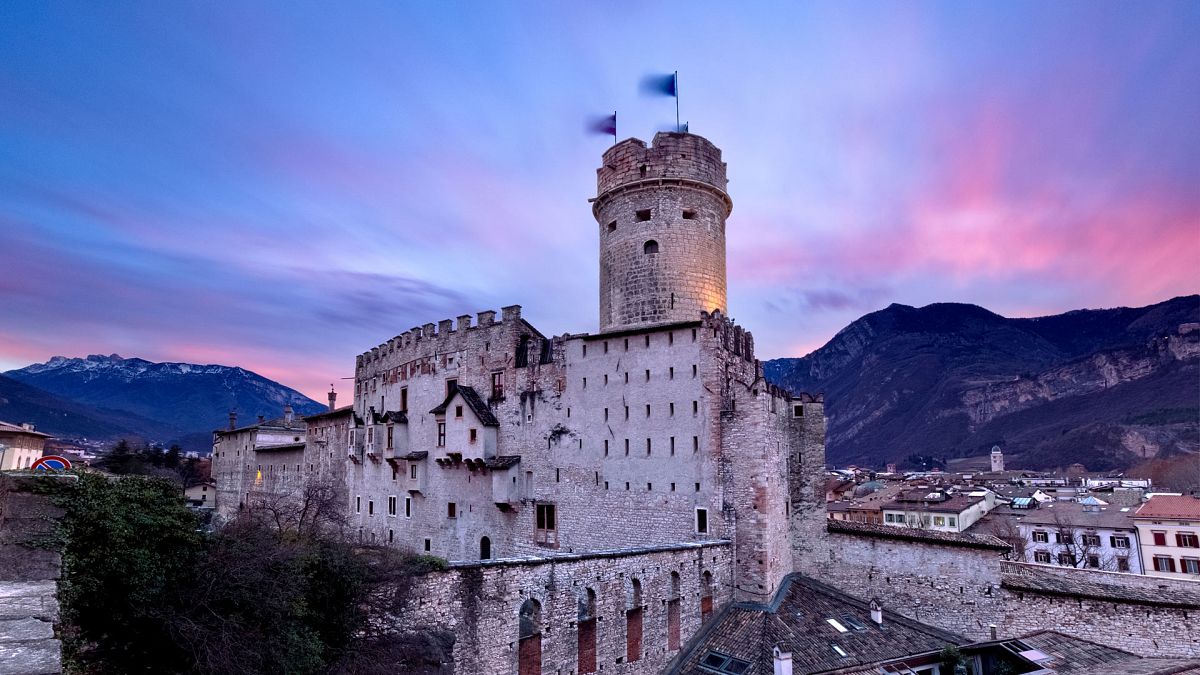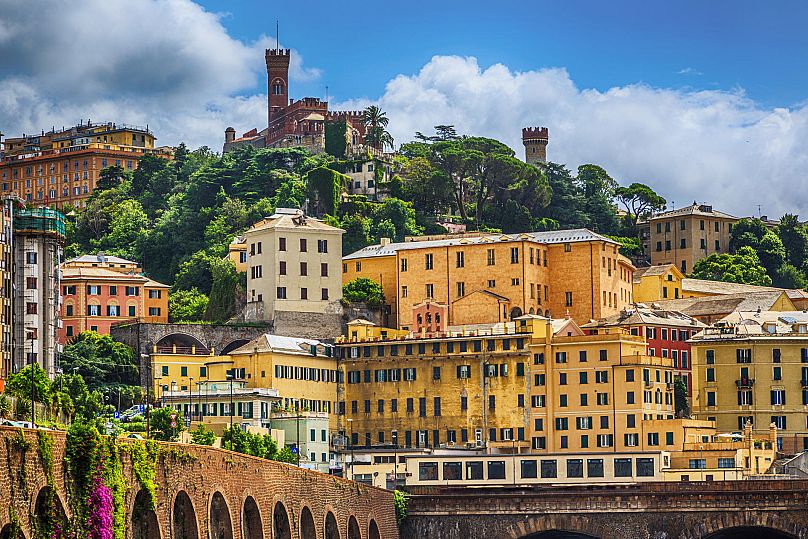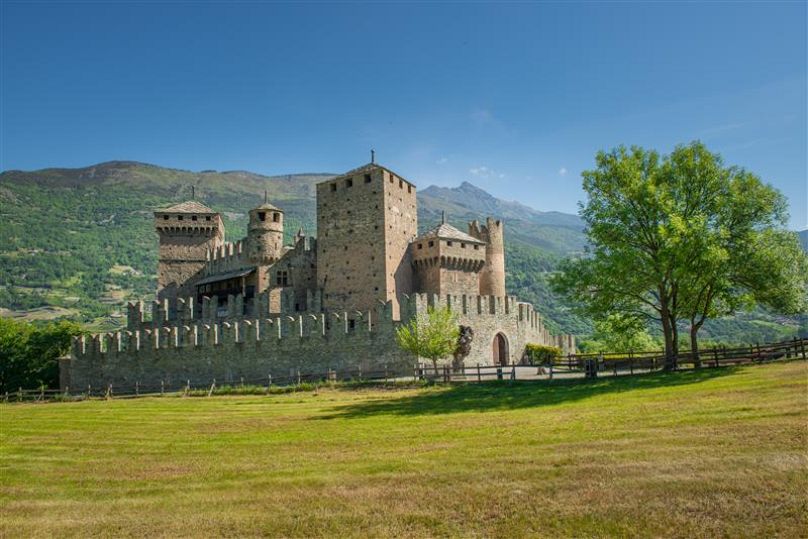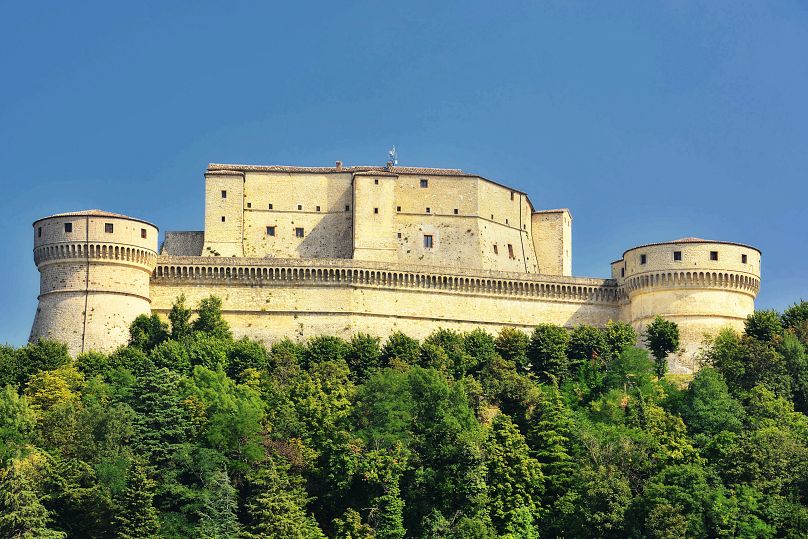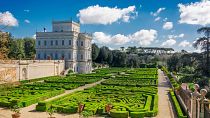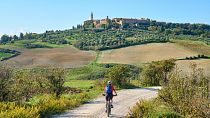Northern Italy is a region where history, culture and nature collide, offering travellers a captivating mix of medieval castles and outdoor adventures. From the towering peaks of the Dolomites to the serene lakes of Lombardy, each area has its own historic landmarks and unique story to tell. Here are eight of the best regions to experience the northern Italy’s vibrant diversity.
Trentino
Nestled between the Southern Alps and Venice and overlooked by the spectacular Dolomites, the Italian province of Trentino is a natural haven entrenched in history. There are several historical castles and forts throughout the region, including Buonconsiglio Castle, the former residence of the prince-bishops of Trento and a proud symbol of the city. Just a 30-minute drive south, Rovereto Castle stands as a shining example of Italy’s late Medieval alpine fortifications, now home to the Historical War Museum.
For outdoor adventure and stunning natural beauty, few areas in Italy compare to the Dolomites. A UNESCO Natural Heritage Site, the lofty peaks provide breathtaking scenery and superb outdoor activities. It is a hiker’s paradise with an extraordinary number of trails weaving across towering summits, green valleys and remote villages, while 400km of paved cycle paths are perfect for all levels.
Veneto
Around three hours northeast of Trentino lies Cortina d’Ampezzo, known as the Venetian Queen of the Dolomites. Embraced by a magnificent wall of mountains, 1,200km of pistes and 140 modern lifts, Cortina is one of the largest ski complexes in the world. The 1956 Winter Olympics made the area into a world-famous resort, a legacy that continues to this day. In 2026, the town will co-host the Winter Games, 70 years after its Olympic debut.
The Closing Ceremony of the Olympic Games and the Opening Ceremony of the Paralympic Games will be held in Veneto, in the city of Verona, which is home to the ancient stronghold of Castelvecchio. Built in 1354, the towers, fortified walls, surrounding moat and drawbridges evoke the grandeur and mystery of a medieval fortress. Today, the complex is home to the Castelvecchio Museum and Gallery housing a diverse collection of frescoes, jewellery, medieval artefacts and paintings.
Friuli Venezia Giulia
Squeezed between the Dolomites and the Adriatic, Friuli Venezia Giulia was historically an area of conquest protected by several imposing fortresses and castles. In the city of Trieste, Miramare Castle was the fanciful neo-Gothic home of Archduke Maximilian of Austria. Twenty minutes up the coast, the 14th-century Castle of Duino is surrounded by flourishing gardens and phenomenal views.
Further inland, Gorizia Castle has served as a fortress, a barracks and a prison over the years, while the castle of Colloredo di Montalbano is known as a sanctuary for writers and storytellers. As well as a fascinating history, the area is a haven for wild swimming, cycling and hiking, while thrill seekers can enjoy zip-lining, paragliding and bobsleighing.
Liguria
Fairytale fortresses, military towers and ancient bastions – when it comes to castles, Liguria takes the crown. Storybook strongholds include D’Albertis Castle in Genoa, housing the Museum of World Cultures, and the Castello Doria with stunning sea views. Lerici Castle, overlooking Lerici bay, boasts an ancient pentagonal tower, while Castello Brown in Portofino is surrounded by a Mediterranean garden full of flowers, rose gardens and pergolas.
Beyond history, Liguria's wild outdoors boats rugged coastal cliffs, lush hills and scenic hiking trails making it a perfect blend of cultural heritage and natural beauty. Climbers shouldn’t miss the many alpine climbing routes on the region’s northwest coast.
The Aosta Valley
The Aosta Valley in north-western Italy is a dramatic glacial valley lined with enchanting castles, each within view of the next. One of the grandest is Castello di Fénis, a medieval manor with marvellous crenellated walls and soaring towers. Savoy Castle, meanwhile, was built between 1899 and 1904 boasting five cuspidate towers and a botanical garden.
No trip to the Aosta Valley is complete without a visit to the Fortress of Bard, an impressive castle dating back to 1000, which was used as a military structure until 1830. Today the fortress is the new cultural centre of the Western Alps, home to the Museo delle Alpi which houses regular historical exhibitions.
Between castle visits, pristine mountain landscapes offer endless opportunities for outdoor adventure, from trekking through lush valleys, skiing down snow-covered slopes or simply soaking in views of the surrounding peaks.
Lombardy
Lombardy is home to a remarkable collection of castles set against the backdrop of stunning natural vistas. Among the must-visit strongholds is Desenzano Castle, a fortress perched above Lake Garda, offering majestic views from its walkways and easy access to the lake's outdoor activities, such as hiking, sailing and watersports.
In Pavia, the Visconti Castle, dating back to 1360, is renowned for its historical significance and beautiful mullioned windows. For panoramic views of the Valtellina valley, head to the hilltop Castel Grumello or for history at the heart of the Winter Games action, head to Palazzo De Simoni in Bormio which dates back to the 17th century and houses a palace, medieval tower church and garden.
South Tyrol
With its leafy boulevards, botanical gardens and medieval core, Merano in the South Tyrol region is a postcard-perfect historical gem and an attractive urban base for skiing, cycling or hiking in the nearby mountains. Trauttmansdorff Castle is a notable attraction in the city of Merano, originally a fortress that was transformed into a noble family home in the 16th century and today serves as a museum. The Gardens of Trauttmansdorff Castle are also worth roaming, covering 12 hectares with exotic cacti, fruit trees and a kaleidoscope of flowers that cascade down the hillside.
Just twenty minutes north, Tyrol Castle has stood proudly on a steep crag high above the city for nearly 1,000 years. Once the ancestral seat of the counts of Tyrol, it now houses a museum that explores the turbulent history of the 20th century.
Emilia Romagna
Emilia Romagna is home to some of Italy’s best-preserved castles, spread across pristine countryside ideal for rambling. Parma’s picturesque Castello Di Torrechiara was built between 1448 and 1460, with five signature square towers making it one of Italy’s most distinguished examples of castle architecture.
Another incredibly intact medieval fortress is the Rocca Di Vignola, which stands near the banks of the Panaro River in Vignola. The castle dates back to the 8th century and is recognisable by a combination of semi-cylindrical and square towers, several of which are connected by atmospheric patrol walkways.
History lovers shouldn’t miss the clifftop Fortezza Di San Leo near the Marche border. The foundations date back to Roman times and the building served as a prison in the 15th, 16th and 20th centuries. Today, the castle hosts a museum that showcases Renaissance weapons and torture instruments.
Discover more of the best castles in Northern Italy at Italia.it.
